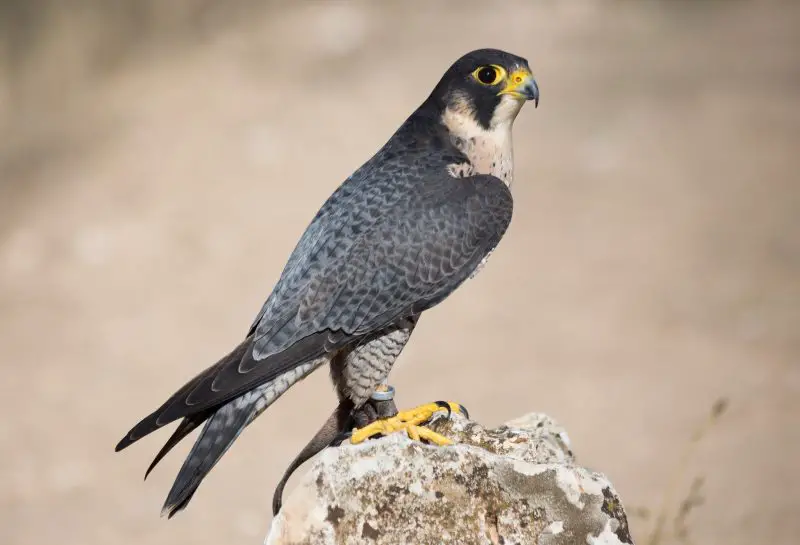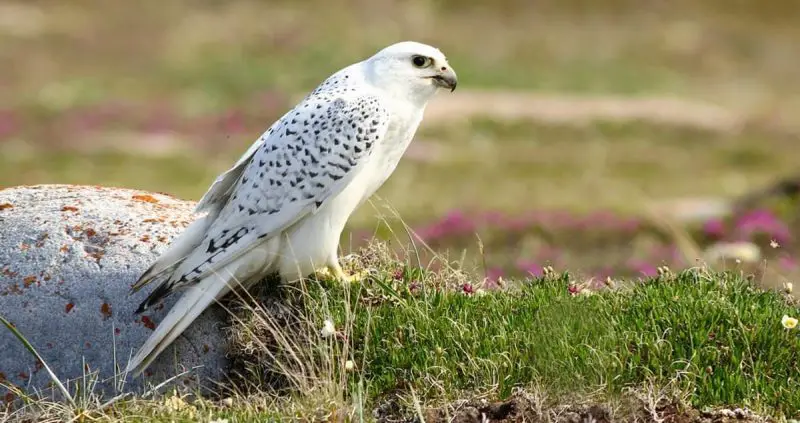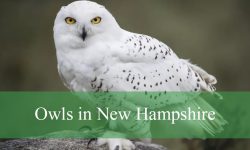Falcons in Illinois are some of the most fascinating and agile birds of prey found throughout the state. Known for their speed, precision hunting, and keen eyesight, these raptors capture the attention of bird enthusiasts and nature lovers alike. Seeing a falcon dive at high speed or soar gracefully through the sky is a striking glimpse of untamed nature thriving amidst both cityscapes and suburban surroundings.
Illinois provides a variety of habitats that support different falcon species, including both year-round residents and seasonal migrants. The most frequently observed falcons in Illinois are the Peregrine Falcon, American Kestrel, Merlin, and the rarely seen Gyrfalcon. Each species has its own distinct appearance, behavior, and preferred environment.
This guide introduces the 4 most common falcons in Illinois with clear identification tips and photos. From the rooftops of Chicago to the open farmlands of southern Illinois, these raptors can be found in both unexpected and familiar places across the state.
Different Types of Falcons Found in Illinois
Peregrine Falcon (Falco peregrinus)

The Peregrine Falcon is one of the most iconic raptors in Illinois, celebrated for its remarkable comeback from the brink of extinction. Known for being the fastest bird on Earth, it can reach diving speeds exceeding 200 miles per hour when hunting. Adult Peregrines display a sleek, slate-gray back, white underside, and a sharply defined dark “mustache” mark on each side of their face. Their wings are long and pointed, allowing them to slice through the air with deadly precision as they strike mid-air prey, often birds. Typically measuring 14 to 19 inches in length with a wingspan of 3.3 to 3.6 feet, they exhibit powerful, streamlined bodies that are built for speed and agility.
Historically, Peregrines nested on cliff faces along the Mississippi River, but following their reintroduction in the 1980s, many have adapted to urban life. Today, they frequently nest on tall skyscrapers, bridges, and towers in major Illinois cities such as Chicago, where buildings mimic the high cliffs of their ancestral homes. During migration periods, they are spotted statewide, from suburban rooftops to expansive open habitats like lakeshores and river valleys. These birds are migratory but can remain year-round in urban centers where food is abundant.
Thanks to decades of conservation work — including captive breeding, nest box installations, and legal protections — the Peregrine Falcon has made a significant recovery in Illinois. It now thrives in both natural and urban environments, symbolizing one of the greatest success stories in bird conservation. Their continued presence atop city skylines and river bluffs offers a striking contrast between wild instincts and human development.
American Kestrel (Falco sparverius)

The American Kestrel is the smallest and most widespread falcon in Illinois, and one of the most vividly colored raptors in North America. Males are especially striking, with rusty red backs and tails, contrasting with slate-blue wings. Females are more uniformly rusty brown with black barring. Both sexes feature bold black vertical facial stripes, giving them a fierce expression. Despite their small size—measuring only about 9 to 12 inches long with a wingspan around 21 inches—kestrels are agile and efficient hunters that often hover in place while scanning for prey.
This species thrives in open landscapes, such as prairies, farmlands, pastures, and even suburban parks. In Illinois, kestrels are year-round residents in the southern parts of the state, while populations in central and northern regions tend to be more seasonal, nesting in the spring and summer. They can often be spotted perched on utility lines and fence posts, surveying fields for insects, small rodents, and the occasional songbird. Their diet largely consists of grasshoppers, beetles, and voles, making them beneficial to farmers and gardeners alike.
Kestrels nest in tree cavities, building eaves, and increasingly in nest boxes provided by conservation programs. Unfortunately, their numbers have declined in recent decades due to habitat loss, pesticide use, and competition with invasive species like European Starlings. Nevertheless, they remain a familiar sight across Illinois and are often the first raptor that young birdwatchers learn to identify.
Merlin (Falco columbarius)

The Merlin is a compact, fast-flying falcon that migrates through Illinois primarily during the spring and fall. Slightly larger than the American Kestrel, Merlins have a more muscular build and a darker, more subdued plumage. Males tend to have bluish-gray backs with heavily streaked underparts, while females and juveniles are browner overall. All exhibit a fierce demeanor, strong wingbeats, and quick, aggressive pursuit of prey, often chasing small birds in rapid, twisting flights.
In Illinois, Merlins do not typically breed but are regular migrants throughout the state. They are most commonly observed in open woodlands, grasslands, lakeshores, and large urban parks during migration. While sightings can occur across the state, birders tend to find them more frequently in northern and central Illinois during their southbound journeys. On occasion, Merlins may overwinter in southern Illinois during mild winters, especially where food sources remain available.
Their hunting strategy is bold and high-energy, often ambushing flocks of finches or sparrows in midair. Unlike kestrels, Merlins rarely hover and prefer short bursts of intense speed to overpower their prey. They typically nest in the far north, using abandoned crow or hawk nests in trees. Though not a permanent resident of Illinois, the Merlin’s dynamic behavior and rarity during migration make it a favorite among seasoned birders and raptor enthusiasts.
Gyrfalcon (Falco rusticolus)

The Gyrfalcon is the largest and rarest falcon to appear in Illinois, known primarily from sporadic winter sightings in the northern parts of the state. Native to the Arctic tundra, this formidable predator only ventures into Illinois during irruptive years when food shortages or severe weather push it southward. Adult Gyrfalcons come in three main color morphs—white, gray, and dark—and exhibit powerful builds with long tails and broad wings. Measuring 20 to 25 inches long with a wingspan of up to 63 inches, they dwarf other falcons in both size and presence.
These birds are apex predators in their natural range and show a preference for open habitats, even during their rare appearances in Illinois. Observations often occur near large lakes, open fields, airports, or other expansive terrain where prey like ducks, pigeons, or gulls gather. Their hunting style is relentless and forceful, favoring strong level flight rather than high-speed stoops. Gyrfalcons are sometimes mistaken for large hawks due to their size, but their long, pointed wings and powerful beak distinguish them as true falcons.
Because they are extremely rare in the Midwest, Gyrfalcon sightings cause excitement among local birding communities. Most documented occurrences in Illinois come from counties bordering Wisconsin, where the birds may stay briefly before returning north. For those fortunate enough to spot one, the Gyrfalcon offers a fleeting but unforgettable glimpse into the wild Arctic spirit that occasionally graces the Illinois winter sky.
Best Places to Spot Falcons in Illinois
Illinois offers a wide variety of habitats that support both resident and migratory falcon species. From towering urban skylines to open grasslands and river valleys, falcons can be observed in both natural and human-altered environments throughout the year. Knowing where to look greatly increases your chances of spotting species like the Peregrine Falcon, American Kestrel, Merlin, and on rare occasions, the Gyrfalcon.
In urban areas, Chicago stands out as one of the best places to see Peregrine Falcons. These birds have adapted remarkably well to city life, nesting on high-rise buildings, bridges, and ledges that mimic the cliffs of their natural habitat. Keep an eye on skyscrapers along the downtown riverfront, and you may see a Peregrine stooping toward an unsuspecting pigeon. Additionally, peregrines have been observed in other cities like Rockford, Peoria, and Springfield, particularly around tall structures.
For a more rural experience, open spaces like Midewin National Tallgrass Prairie, Mississippi Palisades State Park, and Hennepin-Hopper Lakes State Fish & Wildlife Area are prime territories for falcon watching. These locations offer grasslands, wetlands, and open skies that kestrels, Merlins, and the occasional Gyrfalcon favor. During migration seasons, especially spring and fall, large numbers of falcons pass through Illinois Beach State Park, Horseshoe Lake, and the Lake Calumet area, making them seasonal hotspots.
Airports, agricultural fields, and utility corridors across the state also attract falcons, particularly in winter when Merlins and even rare Gyrfalcons seek out open hunting grounds. Whether you’re birding in a city or out on the prairie, bringing binoculars and watching the skies or tree lines can reward you with thrilling views of these agile predators.






